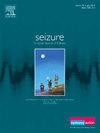The effects of low glycemic index diet on epileptic seizure frequency, oxidative stress, mental health, and health-related quality of life in children with drug-resistant epilepsy
IF 2.7
3区 医学
Q2 CLINICAL NEUROLOGY
引用次数: 0
Abstract
Aim
There is a gap in the existing literature regarding the evaluation of the effects of low glycemic index diet (LGID) on Turkish patients with drug-resistant epilepsy (DRE), as well as the impact of an LGID on oxidative stress markers in this population. This study aimed to evaluate the efficacy of an LGID on seizure frequency, oxidative stress markers [malondialdehyde (MDA), paraoxonase-1 (PON-1), total antioxidant status (TAS), and total oxidant status (TOS)], mental health, and health-related quality of life (HRQOL) in Turkish children with DRE.
Methods
The study used a pre-post design without a control group and involved 34 children with DRE. Seizure frequency, dietary intake, anthropometry, and biochemical parameters were assessed at baseline and after 3 months of LGID treatment. Behavioral and emotional difficulties were assessed with the “Strengths and Difficulties Questionnaire (SDQ)”. The depressive symptoms were evaluated using the “Children's Depression Inventory (CDI)” and HRQOL was assessed with the “Pediatric Inventory of Quality of Life (PedsQL)”.
Results
Thirty of the 34 included children completed the three-month LGID treatment. By the study's end, 38.2 % (13/34) achieved >50 % seizure reduction and 41.2 % (14/34) were seizure-free. Glucose (p < 0.001), insulin (p = 0.005), CRP (p = 0.046), and triglyceride levels (p = 0.015) significantly decreased. MDA levels decreased (p < 0.001), whereas PON-1 levels increased significantly (p = 0.035). There was a significant improvement in all subscales of the HRQOL (p < 0.001), as well as the total HRQOL and CDI scores (p < 0.001). According to the SDQ, the conduct problems, hyperactivity/inattention, and emotional symptoms scores were significantly decreased. There was a negative correlation between MDA (r = -0.512, p = 0.005) and LGID efficacy after 3 months of LGID. Serum levels of MDA and glucose were positively correlated (r = 0.412, p = 0.033).
Conclusion
LGID shows promise in reducing seizures and improving oxidative stress, mental health, and quality of life for pediatric DRE in the short term. Further research is needed to address the limitations (small sample size, no control group, etc.) and investigate LGID's long-term effects.
低血糖指数饮食对耐药癫痫患儿癫痫发作频率、氧化应激、心理健康和健康相关生活质量的影响
目的:关于评估低血糖指数饮食(LGID)对土耳其耐药癫痫(DRE)患者的影响,以及LGID对该人群氧化应激标志物的影响,现有文献存在空白。本研究旨在评估LGID对土耳其DRE患儿癫痫发作频率、氧化应激标志物[丙二醛(MDA)、对氧酮酶-1 (PON-1)、总抗氧化状态(TAS)和总氧化状态(TOS)]、心理健康和健康相关生活质量(HRQOL)的影响。方法:采用不设对照组的前后设计,纳入34例DRE患儿。在基线和LGID治疗3个月后评估癫痫发作频率、饮食摄入、人体测量和生化参数。采用“优势与困难问卷(SDQ)”评估行为和情绪困难。采用“儿童抑郁量表(CDI)”评估抑郁症状,采用“儿童生活质量量表(PedsQL)”评估HRQOL。结果:34例患儿中有30例完成了3个月的LGID治疗。研究结束时,38.2%(13/34)患者癫痫发作减少50%,41.2%(14/34)患者癫痫无发作。葡萄糖(p < 0.001)、胰岛素(p = 0.005)、CRP (p = 0.046)和甘油三酯水平(p = 0.015)显著降低。MDA水平降低(p < 0.001), PON-1水平显著升高(p = 0.035)。HRQOL的所有亚量表以及HRQOL和CDI总分均有显著改善(p < 0.001)。根据SDQ,行为问题、多动/注意力不集中和情绪症状得分显著降低。LGID治疗3个月后,MDA与LGID疗效呈负相关(r = -0.512, p = 0.005)。血清MDA水平与葡萄糖水平呈正相关(r = 0.412, p = 0.033)。结论:LGID有望在短期内减少癫痫发作,改善儿科DRE的氧化应激、心理健康和生活质量。需要进一步的研究来解决局限性(样本量小,没有对照组等),并调查LGID的长期影响。
本文章由计算机程序翻译,如有差异,请以英文原文为准。
求助全文
约1分钟内获得全文
求助全文
来源期刊

Seizure-European Journal of Epilepsy
医学-临床神经学
CiteScore
5.60
自引率
6.70%
发文量
231
审稿时长
34 days
期刊介绍:
Seizure - European Journal of Epilepsy is an international journal owned by Epilepsy Action (the largest member led epilepsy organisation in the UK). It provides a forum for papers on all topics related to epilepsy and seizure disorders.
 求助内容:
求助内容: 应助结果提醒方式:
应助结果提醒方式:


